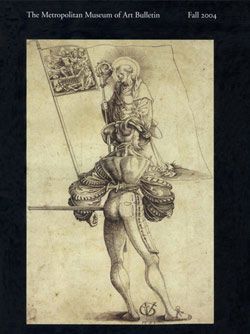Vase
Designed by Philippe Wolfers Belgian
Wolfers Freres Belgian
In 1892 Philippe Wolfers, with his brothers Max and Robert, took over his father's prosperous goldsmith firm and became its design director. The shape of this vase, which is one of a kind, reflects his earlier training as a sculptor and draftsman. The object employs the quintessential sculptural form, the figura serpentinata, which lures the observer into handling, turning, and admiring it from all sides. Naturalistic cyclamen floral elements had intrigued Wolfers since 1895. Here the leaves embrace the restrained double-gourd shape and create a playful contrast to the wildly curling shoots sprouting at the waist. These shoots encase the body and culminate in a lobed handle. This vase is a highly individual interpretation of seventeenth and eighteenth-century ceramic ornament forms: Wolfers freed the typically painted décor and transformed it through the metal's malleability into three-dimensional ornament. The preparatory drawing was shown at the Paris Salon of 1897, and one year later the vase was published as an icon of Art Nouveau in Studio-Talk. The vase is a highly important document of the style in Brussels, a city that celebrates Art Nouveau in the legacy of versa tile artists such as Henry van der Velde, Paul Hankar, and Victor Horta. Between 1909 and 1910 Horta designed the new Wolfers Frères offices in that city.
This image cannot be enlarged, viewed at full screen, or downloaded.
This artwork is meant to be viewed from right to left. Scroll left to view more.




